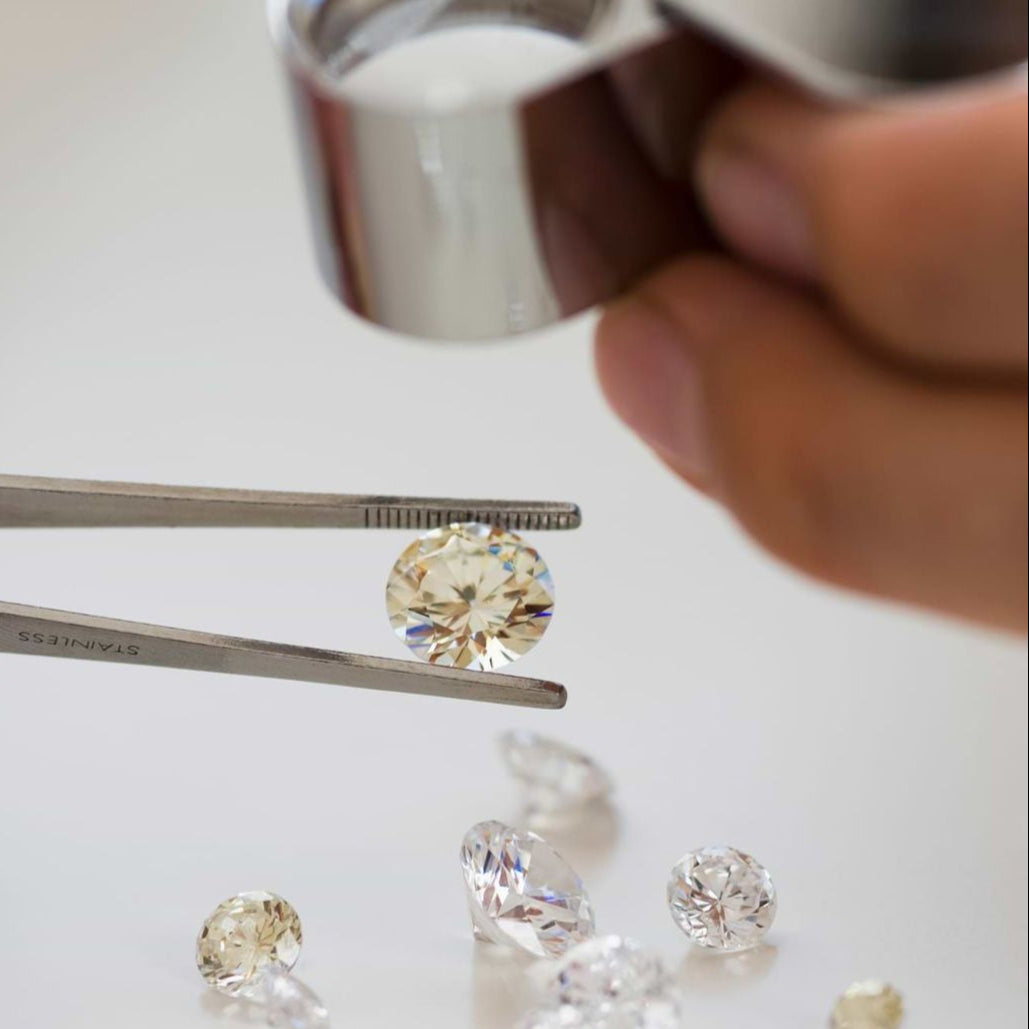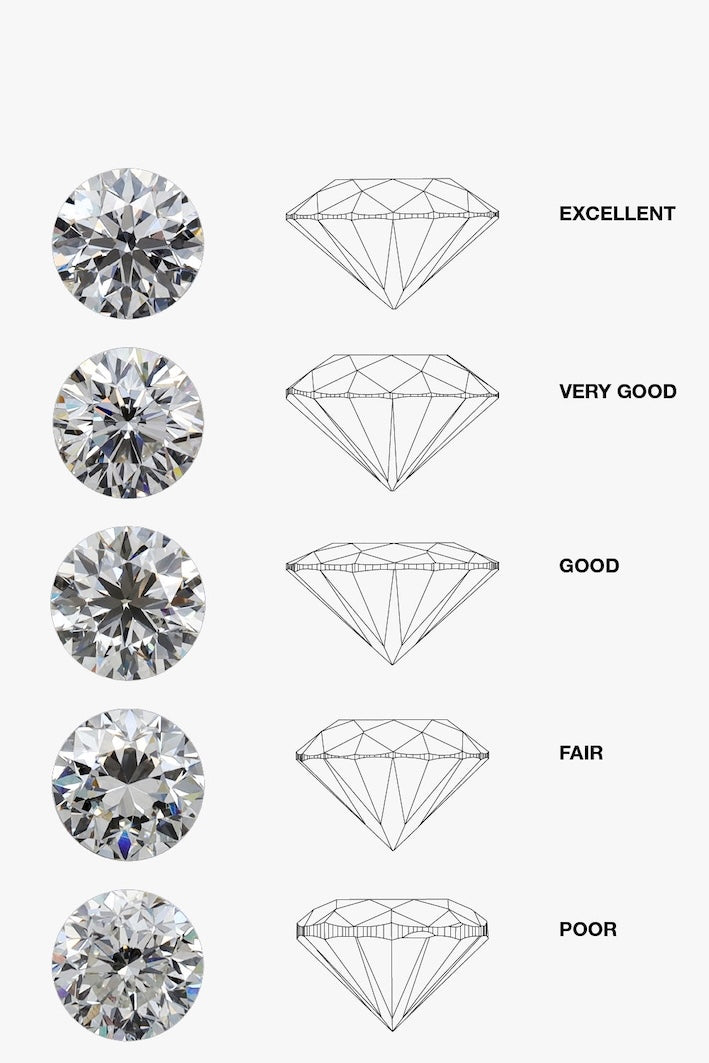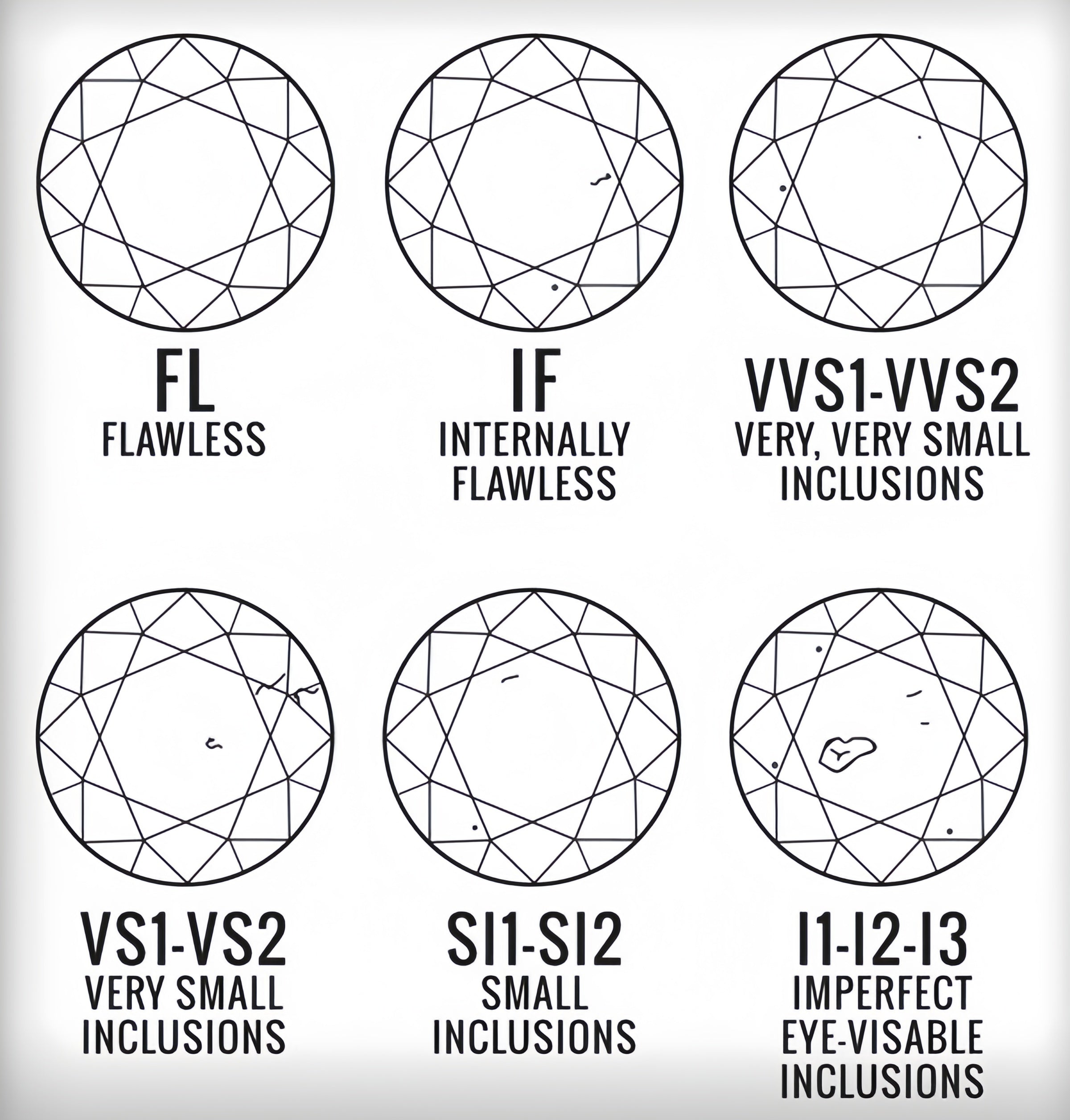
A Complete Guide to the 4C Standard
A diamond's quality and value are determined by four key factors, known as the 4Cs—color, clarity, cut, and carat weight. These criteria were established by the Gemological Institute of America (GIA). Understanding these four characteristics will help you make a confident and informed decision when choosing a diamond that perfectly suits your style, budget, and preferences.
Diamond Cut
A diamond’s cut is more than just its shape — it determines how expertly the stone reflects and refracts light, creating its signature sparkle and fire. A well-cut diamond boasts exceptional brilliance, light performance, and often appears larger than other diamonds of the same carat weight. Even diamonds with excellent color grade and clarity grade can look dull if the cut quality is poor.
Among the 4Cs of diamonds, cut quality is considered the most crucial factor influencing the diamond’s overall beauty and value. When shopping for an engagement ring or fine jewelry, prioritize diamonds with an ideal cut or excellent cut grade to ensure maximum sparkle and visual impact.

Types Of Diamond Cuts
- Excellent Cut – Perfect proportions and symmetry, maximizing brilliance and fire. Virtually flawless to the naked eye.
- Very Good Cut – Slightly less precise than Excellent but still offers outstanding sparkle; minimal visible flaws.
- Good Cut – Decent brilliance and fire with good symmetry; minor imperfections may be visible upon close inspection; more affordable.
- Fair Cut – Noticeable proportion and symmetry flaws reduce sparkle; inclusions or dull areas may be visible.
- Poor Cut – Poor proportions and symmetry result in weak light return; diamond appears dull with visible flaws.
Diamond Color
Diamond color is graded from D (colorless) to Z (light yellow). D-graded diamonds are the most valuable and colorless, while Z-graded diamonds have a distinct yellow tint. The primary color you see in diamonds is yellow, which is caused by trace amounts of the element nitrogen.
-

- D-F: Colorless. These diamonds are the highest grade, devoid of any color.
- G-J: Near-colorless. Diamonds appear nearly colorless and offer a good value.
- K-M: Slightly yellowish. These diamonds begin to show a faint yellow tint.
- N-Z: Light yellowish. A distinct yellow hue is visible to the naked eye.
Diamond Clarity
Diamond Clarity is a key factor in evaluating the number and visibility of blemishes or inclusions on a diamond’s surface and inside its structure. Whether a diamond is natural or lab-grown, tiny imperfections may still be present. These inclusions form naturally during the diamond’s growth process, making every stone truly unique.
The term “Eye-Clean” diamond refers to a stone whose inclusions are not visible to the naked eye without magnification. This typically corresponds to a clarity grade of SI1 or higher. The higher the clarity grade, the fewer the inclusions, allowing more light to pass through the diamond, enhancing its brilliance and sparkle. Flawless (FL) diamonds, which display no inclusions even under 10× magnification, are among the rarest and most valuable gems.
If you want a diamond that maintains exceptional brilliance and avoids any visual distractions, choose a VS1 clarity grade or higher. These diamonds are usually completely clean to the naked eye and strike an excellent balance between price and beauty. For buyers on a budget who still value visual appeal, a well-selected SI1 diamond can be an ideal choice, provided it meets the “eye-clean” standard.
Diamond Carats
The term "Carat" comes from the carob seed, once used as the standard unit for diamond weight measurement due to its small, consistent size.
Carat weight is the only objective measure among the 4Cs that reflects a diamond’s physical weight. One carat equals 0.2 grams (200 mg). Carat directly impacts a diamond’s size, visual appearance, and price.
During cutting and polishing, diamonds can lose up to two-thirds of their original weight. Generally, larger carat diamonds cost more, but remember that diamond cut and clarity also affect overall value.


